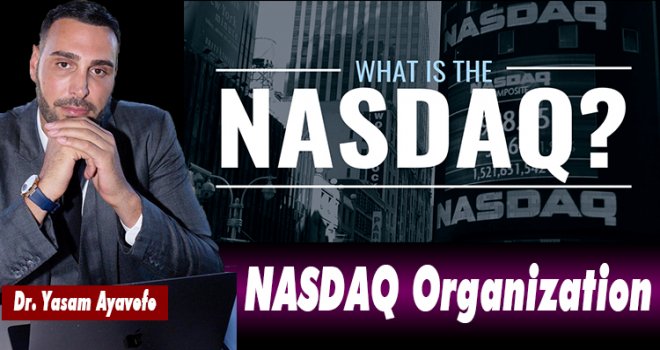

NASDAQ Organization

Created in 1971 by NASD (National Association of Securities Dealers), NASDAQ initially aimed to improve the efficiency of OTC (Over-the-Counter) transactions.
That's why NASDAQ was conceived from the start as a telecommunications network to connect thousands of geographically separated agents.
There are more than 500,000 NASDAQ information system vendors worldwide today. All participants active in this system thus have equal access to the market and information through the simultaneous dissemination of offers and orders.

The NASDAQ is divided into three levels:
- The first level corresponds to orders from individual or institutional investors, which are routed to buyer firms (Order Entry Firms) through various communication systems: public telephone networks, private networks or the Internet, etc.
Buyers are expected to make a reasonable effort to obtain the best practice price for their customers.
Theoretically, they should choose the best broker to fulfill each order. However, in practice, many cannot systematically obtain the best price by resorting to a privileged intermediary.
However, large investors are free to circumvent these firms through direct market intermediaries or by doing business.
- The second level of the NASDAQ consists of the information system that provides buyer firms and specific brokers with the best quotes from all brokers and ECNs.
Depending on their size, orders are then forwarded to brokers via SOES (Small Order Execution System) or SelectNet:
- An automated system, KIT, is used to execute orders up to 1,000 shares. It guarantees that any eligible order can be executed automatically and instantly, even in extreme market conditions, at the best price offered on NASDAQ.
When an investor places an order, the SOE directs. It is forwarded to the agency offering the best price. Then he performs the transaction with this agency. Participation in SOES is mandatory for all participants in the national market for NASDAQ securities.
- SelectNet, similar to e-mail, allows price negotiation between market participants and ECNs. Using SelectNet, a participant can send a security order to another participant or publish it to everyone via the NASDAQ electronic market.
Filtering-based negotiation allows participants receiving orders to accept, reject, or discuss them.
After the parties have agreed on the trading terms, SelectNet hides the details of the outcome and resolution of the transaction while marking the trade. SelectNet therefore never creates a matching service. It creates a vector for information transfer only.
- The third level of the NASDAQ, finally, is the level that allows market intermediaries and ECNs to quote securities and revise them as they are replaced by the execution of orders.
Currently, more than 500 firms acting as intermediaries provide capital support services to NASDAQ-listed securities.
All these firms are subject to three obligations:
- First, to reveal their willingness to buy and sell by showing the two sides of the listing of all the securities they have chosen to be the intermediary of,
- Second, posting both offers and orders on the NASDAQ in accordance with the Securities and Exchange Commission's Order Processing rules,
- Third, to meet the prices they publish and announce the trade at the appropriate time.
The NASDAQ is basically a quotation-based market that has been an auction component since 1997, introduced at the same time as new order execution rules and entry.
The operation of the NASDAQ is therefore different from the New York Stock Exchange (NYSE), which is a market based on continuous auctions (order-driven).
Specialists in various securities intervene there. Unlike the NASDAQ, it is driven by each security. There are several market makers competing to unload orders from customers and other stakeholders.
The trend of all marketplaces is to continually improve the quality of transactions in terms of information, equal treatment and improved negotiation processes.
NASDAQ, which deals with most of the technology stocks in the market, the introduction of ECNs has undoubtedly pushed brokers to take greater advantage of new communication technologies.
But paradoxically it is far from purely electronic. Back in the decade, exchanges were mainly negotiated over the public telephone network. It is now partially computer driven.
However, if a system similar to e-mail (SelectNet) is used to forward orders to intermediaries or send agency orders directly, these orders will not be matched automatically.
However, to truly play a constructive role, technology needs to be introduced, everywhere from communication networks to matching algorithms.
Such an electronic matching service must protect ECNs, at least before NASDAQ introduces the system that will transform itself into one gigantic ECN.
Dr.Yaşam Ayavefe
-
 Bayındırlık ve Ulaştırma Bakanı Erhan Arıklı'nın 1 Mayıs İşçi Bayramı mesajı yay..
Bayındırlık ve Ulaştırma Bakanı Erhan Arıklı'nın 1 Mayıs İşçi Bayramı mesajı yay..
-
 13 kilo uyuşturucusu valizle getirdi
13 kilo uyuşturucusu valizle getirdi
-
 Güney'de et ve zeytinyağı fiyatlarında artış
Güney'de et ve zeytinyağı fiyatlarında artış
-
 HTKS, 4 Mayıs’tan sonra Ercan’da yeniden grev başlatacağını açıkladı
HTKS, 4 Mayıs’tan sonra Ercan’da yeniden grev başlatacağını açıkladı
-
 Mağusa'daki altı plaj 15 Mayıs itibarıyla hizmet vermeye başlıyor
Mağusa'daki altı plaj 15 Mayıs itibarıyla hizmet vermeye başlıyor
-
 Tatar: Devletimizden, egemenliğimizden ve Türkiye’nin garantörlüğünden asla vazg..
Tatar: Devletimizden, egemenliğimizden ve Türkiye’nin garantörlüğünden asla vazg..
-
 Ataoğlu: Coğrafi Bilgi Sistemi’nin kurulması için çalışmalar başladı
Ataoğlu: Coğrafi Bilgi Sistemi’nin kurulması için çalışmalar başladı












